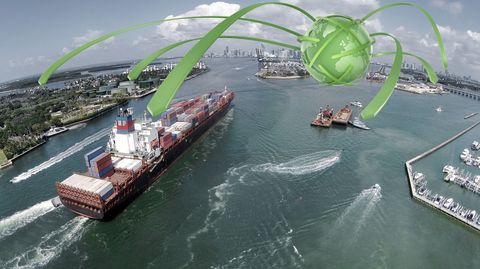Key things to know about making an export declaration
Submitting information to the relevant customs authorities in a full and timely manner is an essential aspect of global trade. Firms that fail to provide complete, accurate information run the risk of a range of issues, from delays at ports of exit or entry to the possibility for large fines or the revoking of export licenses.
If businesses are new to exporting, this may seem like a complex and tedious process, but it is one that no enterprise can afford to get wrong. Therefore, it's vital for all companies engaging in shipping items overseas to familiarize themselves with the relevant local rules in their countries of origin.
While every jurisdiction will have its own rules regarding what is required, when to file a declaration and how to go about this, there are a few common similarities around the world. It also pays to invest in a global software solution that can help automate the process of filing across a wide range of customs regimes.
What is an export declaration for?
At a basic level, an export declaration is a document filed whenever a trader is shipping goods out of a country. This information is used by governments for a wide variety of purposes.
For starters, they are essential in providing full visibility into global trade for statistical purposes. In turn, this data will be used by governments when developing trade policies, so it's vital that the figures are accurate.
Export declarations are also used to ensure businesses are in compliance with rules such as export controls. This includes ensuring that shippers have the relevant licenses for controlled products and are not shipping to entities on a denied party list.
Who needs to make an export declaration?
These declarations should be filed by the exporter of the items. Generally, it is the current owner of the goods in question who is required to make the declaration, but a person or company with control over the items may also file it.
Typically all items over a given value will need a declaration. For goods leaving the US, for example, any shipments including items with a Schedule B number that exceed $2,500 in value require an export declaration, as will any requiring an export license, regardless of value.
What information is needed in an export declaration?
While specifics may vary by jurisdiction, all export declarations should contain basic information about the goods, including their type, amount, value and destination. Usually, this will include a specific commodity code that identifies the goods as well as a more detailed description.
Incorrect codes can be a major reason for inaccurate filings, so having the right tools on hand to identify and apply the correct codes can be a hugely useful part of the export process. With automation software, these can be applied directly to future shipments to reduce the amount of manual work required to make an export declaration.
Typically, an export declaration will be required to include all of the following:
- Commodity code
- Departure point and destination
- Consignee and consignor
- Type, amount and packaging of goods
- Transport methods and costs
- Currencies and valuation methods
- Certificates and licenses
- A unique consignment reference
How should firms make an export declaration?
Firms are typically required to submit their declarations to customs authorities before they leave the jurisdiction. For example, the UK requires most cargo leaving by sea to be declared at least 24 hours before it is loaded onto the vessel. However, there are certain exceptions to this, while goods leaving by air, rail or road have different requirements, so it's important to have a full understanding of the specific rules .
Most countries now require businesses to submit their export declarations electronically. Goods leaving the US, for instance, must have their declaration filed online via an Electronic Export Information Filing (EEI), which is submitted through the via the Automated Export System (AES).
While such digital filings can be made directly through the relevant online portals, using a comprehensive software solution allows forms to be submitted through a single dashboard, as well as ensuring all the required information is accurate, complete and up-to-date.

